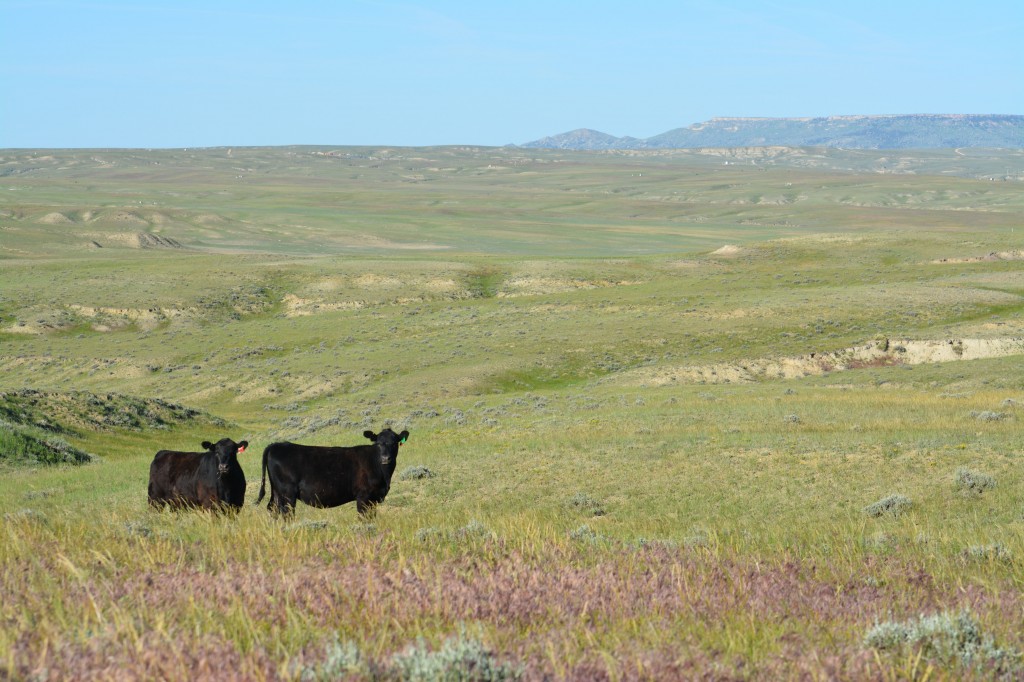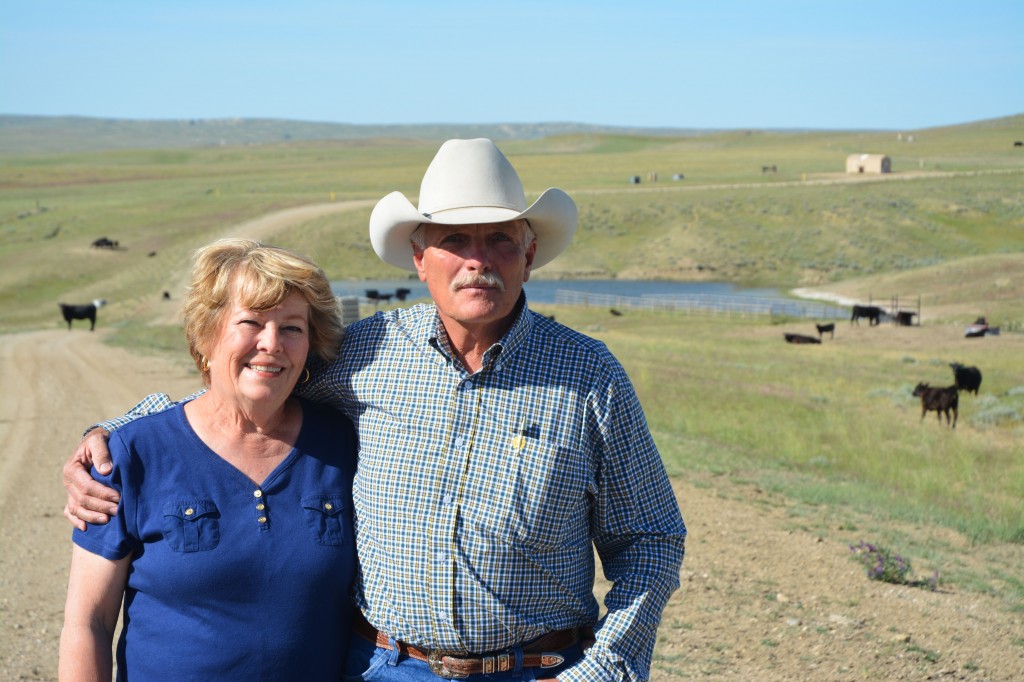
Risking it
I have yet to visit a ranch that I didn’t find beautiful, but Dry Fork Land and Cattle has to rank right up there with the prettiest, so that opening line seemed misplaced.

“You fought with the rats at night to see who got the bed,” Dee laughed. (I don’t think he chuckled so much because of the joke, but because it’s one of those details you can only laugh about after the fact.)

As coalbed methane took off the place got a little busier, as Johnsons do not have the mineral rights, but there was one happy side-effect.
“I said to myself, ‘I can’t stop them from doing that, but I can control what they do with the water,” Dee said, so he insisted that it didn’t leave his land. They developed a reservoir system that now allows them to move water to different parts of the ranch, as well as operate five pivots to build feed resources.
It paid off. Now they run 1,600 cows, yearlings and replacements. They retain the best heifers and the rest join the steers at Darnall Feedlot at Harisburg, Neb., where five years of carcass data show his cattle at nearly 60% Certified Angus Beef ® brand acceptance.

“It was risky what we were going to do. We decided to forgo a sure thing,” Dee said. “We didn’t know how they would perform. And we didn’t know they would do that well when they got graded. It was risky but I thought well worth it.”
Kind of like moving out of a familiar but increasingly developed area of Utah with no room to expand the herd to a rugged and isolated Wyoming expanse; it took risk, and a devoted wife I might add, but Dee took the leap. He saw the potential and made it productive.
May your bottom line be filled with black ink,
Miranda
You may also like
You, Your Cows and Their Feed
Expert guidance from Dusty Abney at Cargill Animal Nutrition shares essential strategies for optimizing cattle nutrition during droughts, leading to healthier herds and increased profitability in challenging conditions.
Marketing Feeder Cattle: Begin with the End in Mind
Understanding what constitutes value takes an understanding of beef quality and yield thresholds that result in premiums and/or discounts. Generally, packers look for cattle that will garner a high quality grade and have excellent red meat yield, but realistically very few do both exceptionally well.
Nebraska Ranch Receives Certified Angus Beef Commercial Award
Troy Anderson, managing a Nebraska ranch, focuses on breeding thriving maternal cows that will grade premium Choice and Prime, while respecting livestock, people and land. Anderson Cattle receives the 2023 CAB Commitment to Excellence Award. Their journey includes improving genetics, feeding home-raised and purchased calves and using data for better breeding decisions, all with a bottom-line approach.



